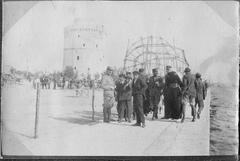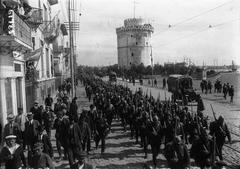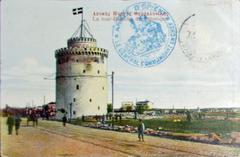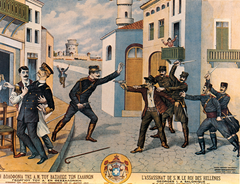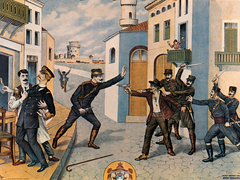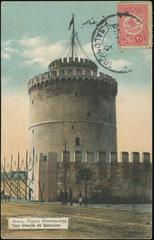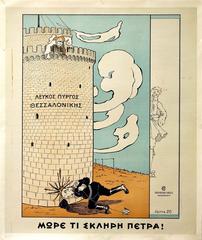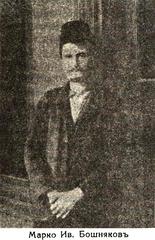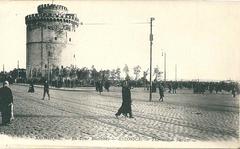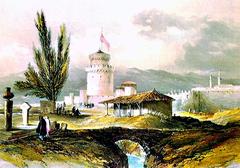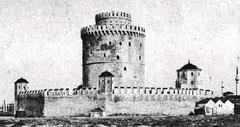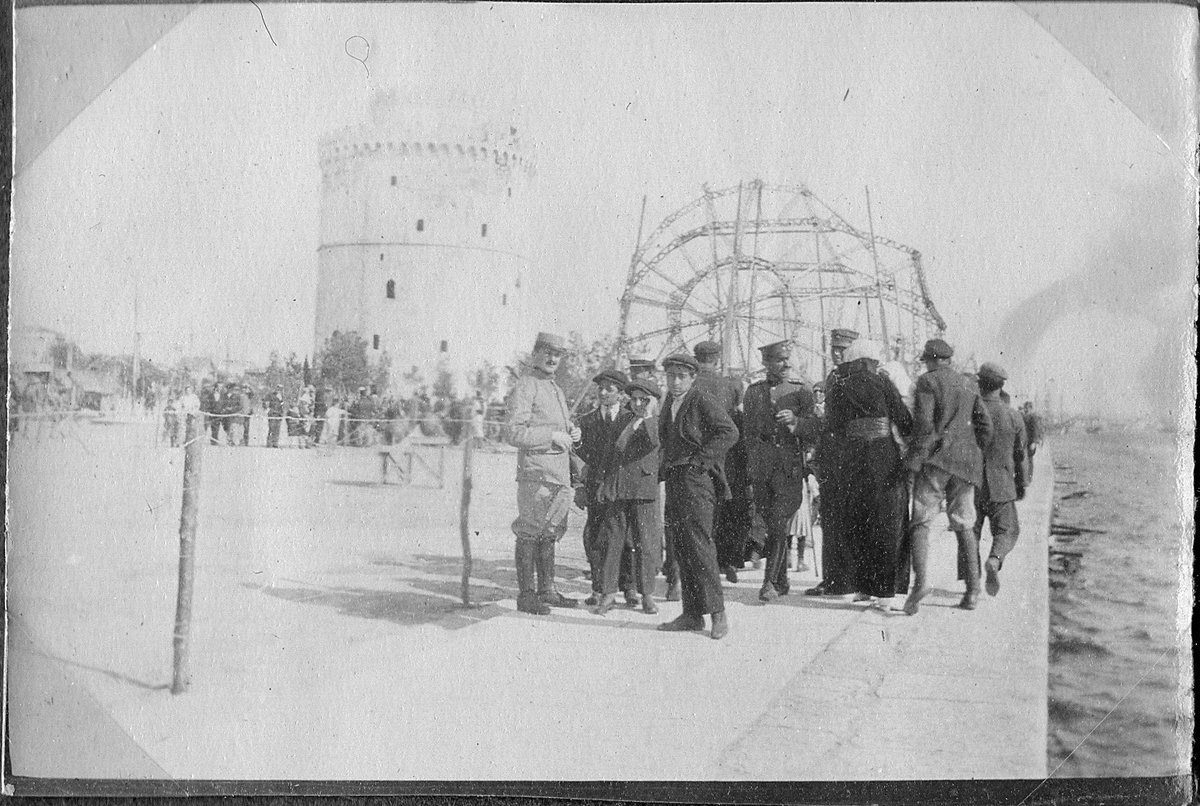
The White Tower of Thessaloniki: Visiting Hours, Tickets, and Historical Significance
Date: 14/06/2025
Introduction
The White Tower of Thessaloniki stands as a powerful symbol of the city’s enduring history and vibrant cultural identity. Originally built by the Ottomans in the 15th century atop Byzantine foundations, this iconic structure has witnessed Thessaloniki’s transformation from a fortified harbor to a bustling modern metropolis. Over centuries, it has served as a fortress, prison, and administrative post—its legacy reflecting eras of conflict, resilience, and renewal. Today, the White Tower is a dynamic museum that invites visitors to explore Thessaloniki’s layered past through immersive exhibitions, panoramic views, and engaging cultural experiences. Whether you are a history enthusiast, a culture seeker, or a casual traveler, this comprehensive guide provides everything you need to plan an unforgettable visit to the White Tower of Thessaloniki (Greek City Times, History Tools, Definitely Greece).
Table of Contents
- Origins and Early Construction
- The Ottoman Era: Fortress and Prison
- Transformation After Liberation and Symbolism
- White Tower as a Museum and Cultural Landmark
- Architectural Features
- Visiting Hours and Ticket Information
- Accessibility
- Travel Tips and Getting There
- Nearby Attractions
- FAQs
- Final Recommendations and Summary
- Sources and Further Reading
Origins and Early Construction
The present White Tower was constructed shortly after the Ottomans conquered Thessaloniki in 1430. Built to replace older Byzantine fortifications, the cylindrical stone tower stands 34 meters tall with a diameter of nearly 23 meters. Its robust design and strategic location at the edge of the city ensured it played a key defensive role, serving as a guard post for Thessaloniki’s harbor and as an integral part of the city’s wall system (Greek City Times).
The Ottoman Era: Fortress and Prison
For almost five centuries, the White Tower was central to the city’s Ottoman administration and defense. It became notorious as a prison and site of executions, earning names like the “Tower of Blood” and “Red Tower.” Political dissidents, rebels, and criminals were detained here; among the most famous prisoners was Rigas Feraios, a Greek revolutionary whose legacy is commemorated by a statue near the tower (History Tools).
Transformation After Liberation and Symbolism
Thessaloniki’s liberation in 1912 marked a pivotal moment for the White Tower. As the city joined the modern Greek state, the tower was whitewashed to symbolize purification and new beginnings—giving rise to its current name. The dismantling of the city’s defensive walls and the tower’s integration into civic life marked its transition from a symbol of oppression to one of peace and national pride (Greek City Times).
White Tower as a Museum and Cultural Landmark
Since 1983, the White Tower has operated as a museum managed by the Museum of Byzantine Culture. Its six thematic floors trace Thessaloniki’s evolution from antiquity to the present, featuring artifacts, multimedia, and interactive exhibits. The museum’s narrative explores the city’s Hellenistic roots, Roman and Byzantine heritage, Ottoman influences, and modern cosmopolitan character. Multilingual audio guides and informative displays make the museum accessible and engaging for all visitors (Definitely Greece, The Crazy Tourist).
Architectural Features
The White Tower’s architecture reflects its defensive origins. The six interconnected floors are accessed via a spiral staircase, with arrow slits and small windows for surveillance. The open-air balcony at the top offers panoramic views of Thessaloniki, the Thermaic Gulf, and Mount Olympus. The original design included spaces for heavy artillery and provided a final stronghold during sieges. Though the surrounding city walls have been removed, the tower remains a striking feature on the seafront (History Tools).
Visiting Hours and Ticket Information
Seasonal Opening Hours:
-
Summer (April–October):
Monday, Wednesday–Sunday: 08:00–20:00
Tuesday: 13:00–20:00 -
Winter (November–March):
Daily: 08:30–15:30
Tuesday: Closed
Ticket Prices:
- General Admission: €4 (winter), €6 (summer high season)
- Reduced Admission: €2 (winter); available for students, seniors, and eligible groups
- Combined Ticket: €15 (valid 3 days; includes White Tower, Rotunda, Archaeological Museum, and Museum of Byzantine Culture)
- Free Admission: Select public holidays and International Museum Day
How to Buy Tickets:
Tickets are available on-site at the White Tower or online via the official museum website. Combined tickets can be purchased for those planning to visit multiple Thessaloniki museums (mbp.gr, thessalonikiblog.com).
Accessibility
Due to the historic spiral staircase and lack of elevators, the White Tower is not fully accessible for visitors with mobility impairments. However, a virtual tour is offered online, and multilingual audio guides are included with admission. Restrooms are available on the ground floor; there is no café inside, but many options are nearby along the promenade (heatheronhertravels.com).
Travel Tips and Getting There
- Location: Nikis Avenue, on Thessaloniki’s seafront promenade (Google Maps)
- Public Transport: Multiple OASTH bus lines stop near the tower
- Walking: 15–20 minutes from Aristotelous Square; the area is pedestrian-friendly
- Bike Rental: BikeIT kiosk by Makedonia Palace Hotel and RideMovi app bikes available along the waterfront
- Parking: Limited street parking; public transport or walking is recommended, especially during busy seasons
Best Time to Visit:
Early morning or late afternoon to avoid crowds and enjoy optimal lighting for photography. Weekdays and shoulder seasons (late spring or early fall) are less busy.
Nearby Attractions
The White Tower is perfectly situated for visitors wishing to explore Thessaloniki’s rich historical and cultural landscape. Notable nearby sites include:
- Archaeological Museum of Thessaloniki
- Museum of Byzantine Culture
- Rotunda and Arch of Galerius
- Hagios Demetrios and Hagia Sophia Byzantine churches
- The “Umbrellas” sculpture on the promenade
- Old Port area with its cafés and MOMus Museum of Photography
- Alexander the Great Statue
- Vibrant Ladadika district
Short themed cruises depart from the waterfront, and numerous public events, festivals, and exhibitions take place nearby throughout the year (heatheronhertravels.com).
Frequently Asked Questions (FAQ)
Q: Where can I buy White Tower tickets?
A: At the White Tower entrance or online via the official museum website.
Q: What are the White Tower Thessaloniki opening hours?
A: Summer: 08:00–20:00 (Tue 13:00–20:00); Winter: 08:30–15:30 (closed Tue).
Q: Is the White Tower wheelchair accessible?
A: No, due to its historic spiral staircase. A virtual tour is available online.
Q: Are guided tours offered?
A: Yes, audio guides are included; group and private tours can be arranged through the museum or local agencies.
Q: Can I take photos inside the White Tower?
A: Yes, photography is permitted (no flash/tripods) and the rooftop terrace is a popular photo spot.
Q: Are there combined tickets for multiple museums?
A: Yes, a €15 combined ticket covers the White Tower, Rotunda, Archaeological Museum, and Museum of Byzantine Culture for three days.
Final Recommendations and Summary
The White Tower of Thessaloniki encapsulates the city’s rich history, from its origins as a defensive bastion and notorious prison to its current role as a beacon of national pride and cultural identity. As a museum, it offers immersive exhibitions, multilingual guides, and breathtaking panoramic views. While the historic structure limits accessibility, virtual options and inclusive content ensure all can appreciate its significance.
Located on the vibrant waterfront, the White Tower is a gateway to Thessaloniki’s many other historical sites, museums, and lively districts. Plan your visit with consideration of seasonal hours, ticket options, and peak times, and explore the wider city for a full appreciation of its layered past and cosmopolitan present.
For the latest updates, ticket purchasing, and virtual tours, consult the official museum website. Download the Audiala app for audio guides and travel tips, and follow us on social media for more on Thessaloniki’s top attractions.
Sources and Further Reading
- Greek City Times: History, Visiting Hours, Tickets & Travel Tips
- History Tools: A Monumental Witness to Greece’s Second City
- Definitely Greece: White Tower Museum Thessaloniki
- The Crazy Tourist: 15 Best Things to Do in Thessaloniki
- Voyage Tips: Things to Do in Thessaloniki
- White Tower Museum Official Website
- mbp.gr: Visiting Hours, Tickets & History Guide
Experience the White Tower of Thessaloniki—where history meets the present and every visitor becomes part of the city’s story.
